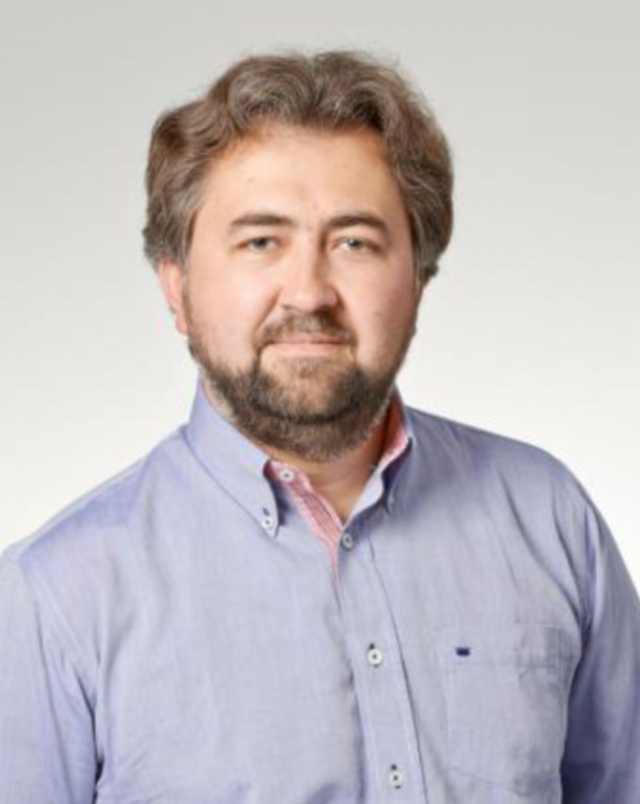应材料科学与工程学院材料科学系胡津教授和唐莎巍讲师邀请,德国亥姆霍兹国家研究联合会吉斯达赫特镁创新中心(MagIC, Helmholtz-Zentrum Geesthacht),腐蚀与表面技术部主任Mikhail L. Zheludkevich教授,Carsten Blawert博士/研究科学家,Maria Serdechnova博士近期来哈工大进行学术交流。
交流期间讲座安排如下:
报告1题目:Active protective multi-functional coatings on basis of "smart" nanocontainers
报告人1:Mikhail L. Zheludkevich

时间:2018年11月30日(星期五)13:30-15:00
地点:材料楼522
报告摘要: The destructive effect of environment and the corrosion induced degradation are the important problems which determine the service life of many metallic components including those exploited in marine environments. The application of organic coatings is the most common and cost effective method of improving protection and durability of metallic structures. However the degradation processes develop faster after disruption of the protective barrier. Therefore an active protection based on “self-healing” of defects in coatings is necessary to provide long-term effect. The active corrosion protection of metallic substrates can be achieved by the addition of corrosion inhibiting compounds to the protective coatings. However, direct mixing of an inhibitor with coating formulations can lead to important drawbacks decreasing barrier properties of the coating and diminishing activity of the inhibitor. Moreover the complexity of the corrosion mechanisms and variety of the conditions where metallic structures can be used calls for the combination of different inhibitors in the same corrosion protection system. This is very problematic in the case of direct addition of different inhibitors due to cross-talk between them.
The present paper overviews our recent progress in development of novel protective coatings with self-healing ability on the basis of nanocontainers that release entrapped corrosion inhibitor in response to presence of corrosive species. The new nanocontainers for organic and inorganic corrosion inhibitors were developed in this work employing nanocarriers including polyelectrolyte layer by layer assembled structures, mesoporous nanoparticles, halloysite nanotubes and different nanoclays. The combination of different nanocontainers in the same coating system was demonstrated to provide an important cooperative effect especially when active coatings for hybrid assemblies are considered.
报告人1简介:
Mikhail L.Zheludkevich教授是德国亥姆霍兹国家研究中心联合会吉斯达赫特材料与海洋研究所镁创新中心腐蚀与表面技术部主任,德国基尔大学工程系教授,葡萄牙阿威罗大学材料工程与陶瓷系特邀教授。Mikhail L.Zheludkevich教授是金属表面处理及腐蚀研究方面的专家。担任欧洲腐蚀协会空间腐蚀控制工作组副主席、欧洲碳钢研究技术组(TGS7)成员、EFC科学会成员等职务。Mikhail L.Zheludkevich教授的研究成果包括:181篇SCI论文,H因子45,40篇受邀请报告,12项发明专利,此外,Mikhail L.Zheludkevich教授还兼任4项欧洲、2项国际项目的负责人,15项国际项目的研究员。
报告2题目:Control of Mg alloy degradation by PEO processing
报告人2:Carsten Blawert

时间:2018年11月30日(星期五)15:00-16:30
地点:材料楼522
报告2摘要:
Magnesium alloys are not very corrosion resistant under various aqueous or humid conditions and the relatively low corrosion resistance of magnesium alloys is currently limiting their applications. Therefore, understanding and improving the corrosion behaviour of magnesium alloys is important for their future applications.
While the possibilities of improving the corrosion resistance (especially galvanic corrosion) by alloying are limited, application of coatings is the other alternative for improving corrosion resistance and offering corrosion protection. The PEO process (plasma electrolytic oxidation) is one of the most promising coating solutions for Mg alloys converting the magnesium surface to hard ceramic-like coatings by formation of micro arc discharges. Unfortunately, the discharges also introduce defects to the coatings such as discharge channels, pores from gas inclusions and cracks, with negative effects on the corrosion resistance. Such defects are quite critical for magnesium alloys, because they are offering fast path-ways for the electrolyte to reach the substrate and initiate corrosion attack. The presentation will demonstrate how the open porosity of PEO can be used to turn the inherent disadvantages into benefits. Microstructure-property relations are given to understand how PEO coatings can be tuned to the requirements of different applications or how duplex treatments can be used to add additional value. Multifunctional coatings with anticorrosion, self-lubrication, anti-wear, bioactive and photocatalytic properties can be produced with the aid of additives to the electrolytes and/or post-treatments using the open porosity.
报告人2简介:Carsten Blawert于2000年博士毕业于德国Technology University of Clausthal大学,2002-2004年在德国亥姆霍兹国家研究中心联合会吉斯达赫特材料与海洋研究所博士后,2004年获得此研究所永久职位Research scientist。目前在镁合金创新中心腐蚀与表面技术课题组负责镁合金的腐蚀与防护方面的研究工作,特别专注于镁合金表面等离子体液体氧化处理,此外还涉及到镁合金作为可降解生物医用金属方面的研究工作。发表论文178篇,他引4852次,H因子37。
报告3题目:Active corrosion protection of aluminum alloy AA2024 using LDH nanocontainers
报告人3:Maria Serdechnova

时间:2018年11月30日(星期五)16:30-18:00
地点:材料楼522
报告摘要:The use of chromate-based treatments is banned in many industrial applications due to high toxicity. Recently, layered double hydroxides (LDH) were studied as environmentally friendly nanocontainers, suitable for corrosion protection of AA2024 alloy [1]. It was shown, that LDHs loaded with corrosion inhibitors act as "smart" nanocontainers: the release of a corrosion inhibitor and the formation of a protective layer takes place only when defects appears and corrosion starts. The same idea was extended in order to add supplementary self-healing properties to AA2024 treated by tartaric sulfuric acid (TSA) anodizing and plasma electrolytic oxidation (PEO) methods [2,3]. This is important since properties of hard and well-adherent anodic layers (PEO and TSA) are significantly compromised by defects in the layer (various pores and cracks).In frame of this presentation, the structure, morphology and composition of PEO and TSA coatings with parental ZnAl LDH-nitrate and LDH loaded with corrosion inhibitor (vanadate) will be considered. It will be shown that the amorphous bohemite phase is suitable for LDH growth, while crystalline α- and γ-Al2O3 can not be converted into LDH containers [4,5]. The corrosion behavior and the effectiveness of LDH formation and inhibitor intercalation will be analysed, showing a remarkable increase in the corrosion resistance of the LDH-inhibitor treated samples comparing with PEO and TSA coated AA2024 specimen.
报告人3简介:Maria Serdechnova生于俄罗斯,1994年至2009年在俄罗斯接受基础教育和本科教育后赴巴黎继续学习,2012年12月在国立巴黎高等化学学校(Chimie Paris Tech)获得博士学位,2013年1月至2014年10月在葡萄牙阿威罗大学材料工程与陶瓷系进行博士后研究工作,2014年11月至今作为博士后在德国亥姆霍兹国家研究中心联合会吉斯达赫特材料与海洋研究所镁创新中心腐蚀与表面技术部从事腐蚀防护方面的研究工作。


